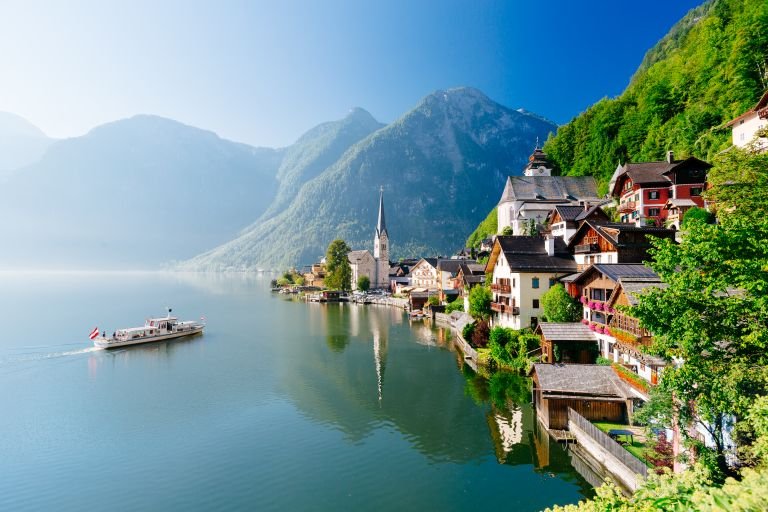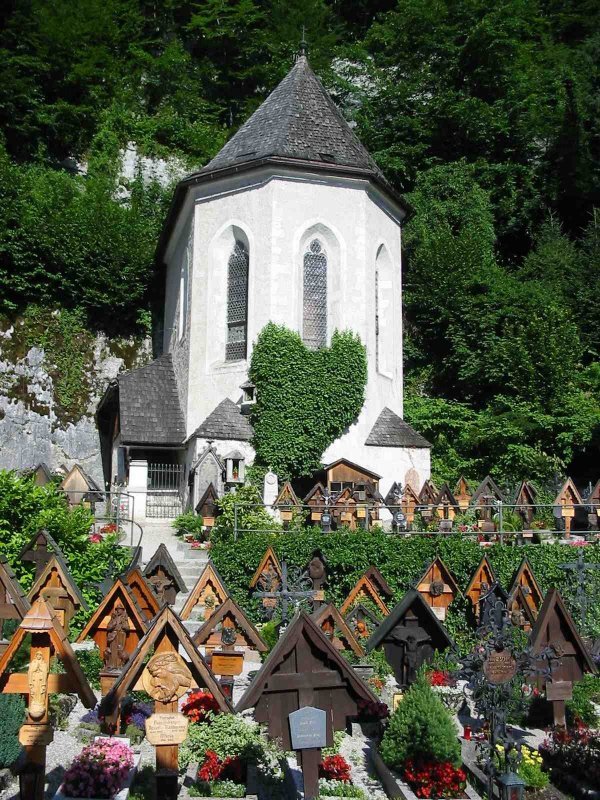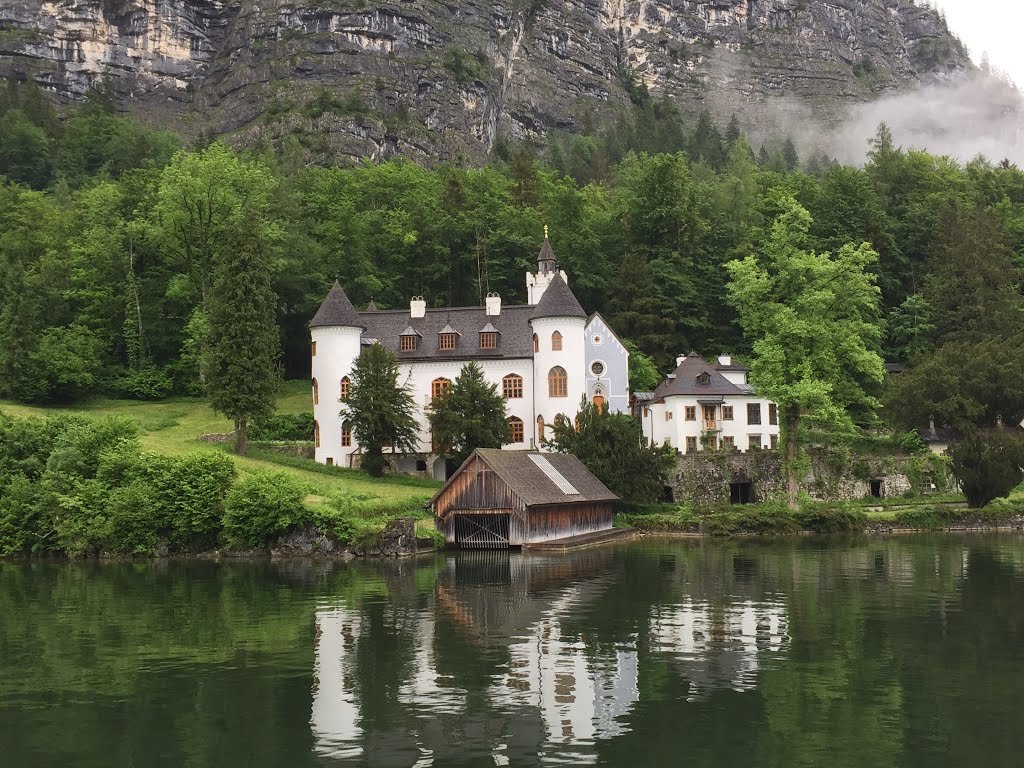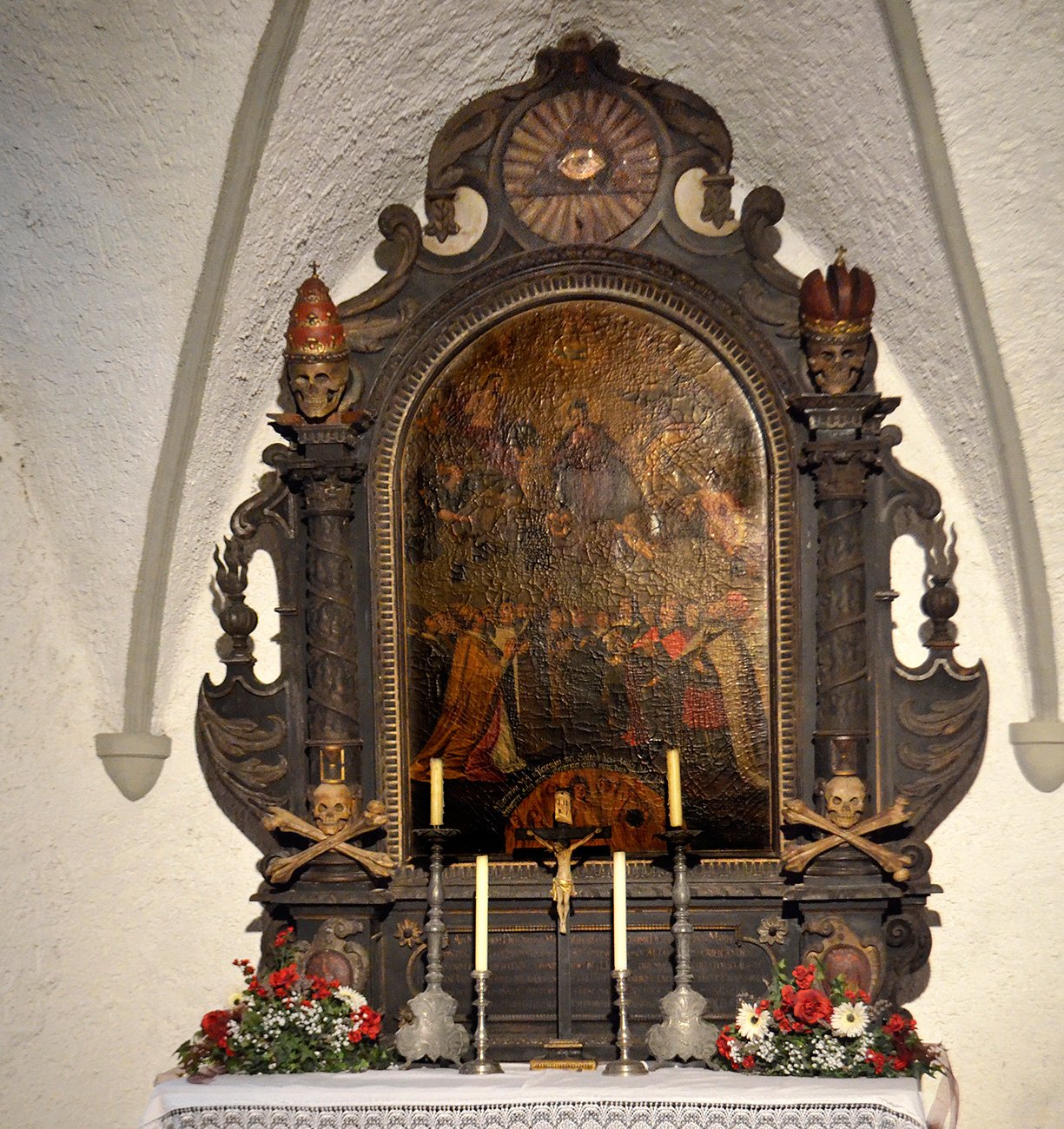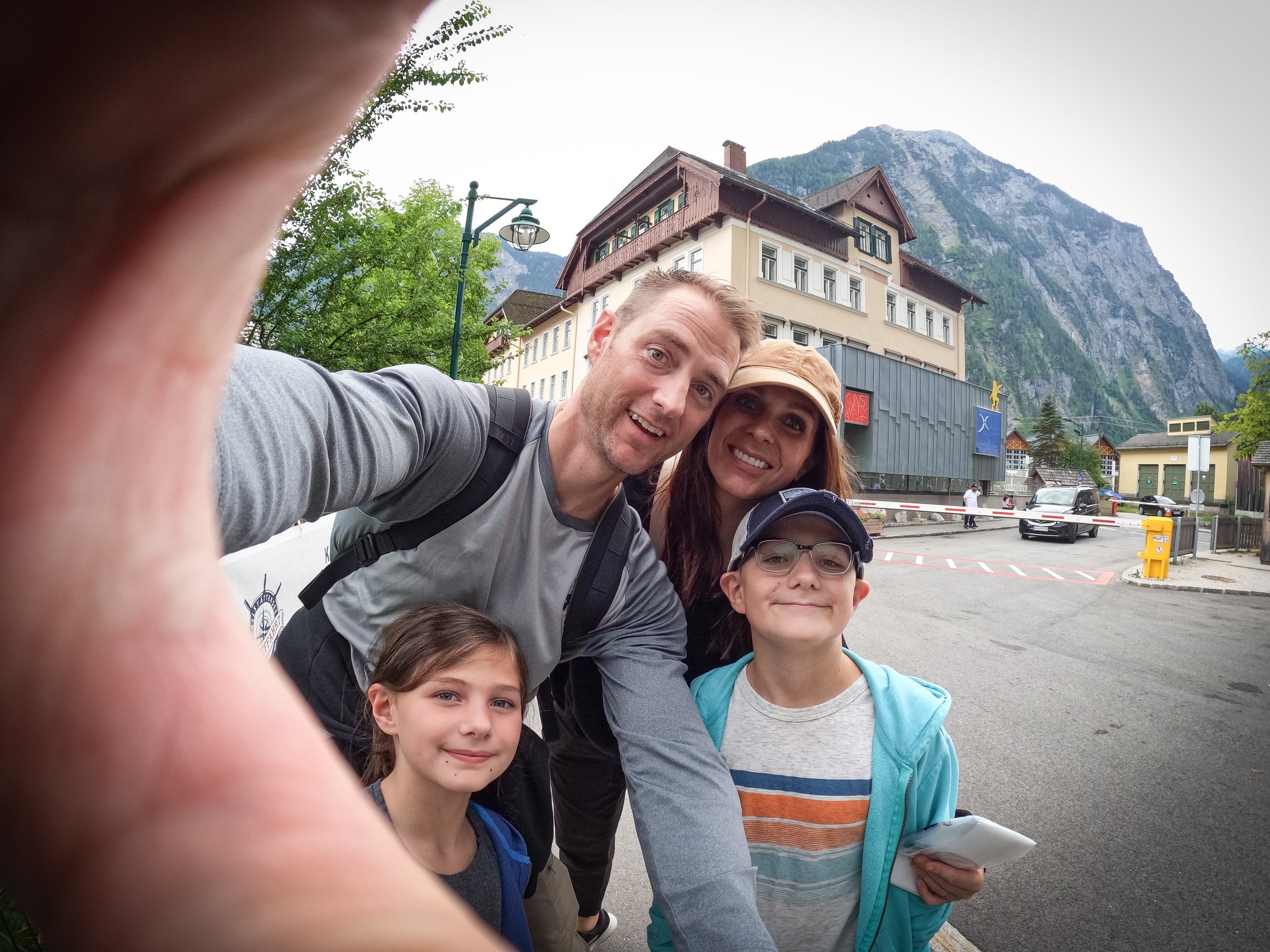Day Out: Hallstatt
Oh Austria! Please forgive me. I didn’t know you were so beautiful! It wasn’t long after we moved into our apartment in Germany that I started to feel antsy. It’s probably because we were limited to public transportation, didn’t have any of our belongings (still don’t) and were walking everywhere before our car arrived. Life has just been a very different (and kind of wonderful) pace. Feeling a little trapped I hopped on the bus to one of the military bases here and waltzed into the travel office feeling ready to book just about anything for us. I grabbed all of the upcoming day-trip flyers and opened my calendar to see what would fit.
First up was zip lining with Matt in the Black Forest (post coming on this fun adventure), followed by a day in Hallstatt, Austria, for four of us —Matt and I, with our two youngest kids, Brian and Nola. I didn’t know anything about Hallstatt before and now I can’t imaging not visiting this perfect fairytale village with a long history, tucked perfectly in the Alps.
While we got up early to have the whole day there, we didn’t think ahead on something super predictable for Europe on this exact weekend. The first weekend in August is when all of Europe starts their full month of vacation so traffic is horrendous. Stand still especially as you get to the German/Austrian border. I looked at car after car packed to the rim with kids and teens and bags from the Netherlands, or Denmark, Germany and Austria, even France, headed to the Alps or Italy, anywhere in the south, to spend their holiday.
Once we crossed into Austria the scenery changed, the traffic divided up and eased, and I was smitten with the beauty of every detail. The mountains are dramatic and steep with bright green pastures carved out and idyllic chalet homes with flowers pouring out of window boxes and balconies, and old churches at the center of each village. It was SO BEAUTIFUL!
We finally arrived to Hallstatt around noon and it is exactly like the pictures.
We had a walking tour for the first hour and a half. I wasn’t sure how Brian and Nola would do —they were the only children — but they loved it! There’s something about knowing the history and some of the personal interest stories of what we’re seeing that makes it so much more impactful. Our tour guide was from Georgia, USA, and had lived in Austria for the past 18 years. Her southern accent made it all the more fun. Something to know now —Hallstatt is a UNESCO World Heritage site which makes it a busy tourist stop — something Austrians are on the verge of limiting because it is impacting beyond it’s capacity.
Let’s go back! Hallstatt’s history goes wayyyy back. Even prehistoric. Evidence of salt was being mined in the towering limestone mountains here dates back 7000 years and was continuously being mined through the proto-Celtic and early Celts of the Iron Age.
Salt was the white gold of the world for it’s ability to preserve food. It was mined by carving out a cave inside the mountain, filling it with water that would dissolve the salt to a brine, and then pumping that brine water out and heating it until all the water evaporated. The men worked in the mine and the women would carry 100-lb packs of the salt up down the mountain twice daily.
In the 1300s the Hapsburgs who were in power in this region restarted the salt mining at Hallstatt which invigorated the village that exists there now. Because there really isn’t any land between the water and the moutain, the town is built up the side of the mountain.
Photograph from 1899. You can see how much it’s remained the same!
The salt mining process required a lot of wood to burn the fires to heat the brine and the area was completely deforested by the late 1500s. They figured out how to build a pipeline, hollowing out 13,000 logs to carry the brine to a different location 40km away to be processed and the trees were allowed to grow again.
The village square was small and so perfect.
Look at all the pears!
The Catholic church dates back to the 1200s and has a double nave. One side with a Gothic alter displaying scenes from the history of Mary’s life, and the other side has an alter, made later by students of the village wood-working school, showing scenes from Jesus life, death and resurrection. A small alter on the side was a crime scene for a great art heist in 1987 that was recently recovered and replaced in 2018. An Italian couple hid in the church and after it was locked up at night, they came out and stole the 4 panels of the alter. For nearly 30 years, the side panels have been empty with just photo copies of the scenes that once filled them. During a raid in Italy in 2017, the panels were secured. Two had been framed and displayed in a private collection, while the other two had just been stored in a warehouse of stolen art and artifacts so they didn’t fare as well.
St. Mary’s Church
These are four side panels that were stolen in 1987 and only recently returned.
Just outside the church is the cemetery and famous ossuary. There just isn’t the space for everyone to be buried in Hallstatt so the village came up with an option. A person could choose to be buried and then have their bones dug up after ten years. The skull and the femurs would be saved and bleached in the sun, and then the skull would be painted with a decorative element and the person’s name and placed in the bone church. There are over 1000 skulls stored inside with the last one being added in the late 1990s. It was stunning to see so many family names rested together in this way. The kids were absolutely fascinated.
Generations of families are grouped together.
Across the glacier lake is a white castle called Schloss Grub. When it’s owner Christoph Eyssel von Eysselsberg died in the late 1600s, his will requested that his remains that were buried in the crypt of the church be transported by boat across the lake to his castle every 50 years. The people of Hallstatt kept his wishes for 200 years and now his bones have remained in the crypt.
Schloss Grub (Grub Castle)
Crypt of Eysselsberg
The protestant church that stands out in all the photos of Hallstatt wasn’t built until the 1800s.
When you visit Hallstatt you can take a funicular up to the top of the mountain to a lookout point and to tour the salt mine. You can also take a boat tour around the lake to see Hallstatt from the water. Across the lake is the town of Obertraun where you can visit an ice caves and there is a fun slide right into the water. The water is cold! But we saw people stripping down right at the edge to jump in for a swim.
Our visit ended with rain for an hour before we headed back home. It was a fun day together and I cannot wait to go back to Austria again. I feel like I need to study up on hiking and finding the hidden gems there. It’s truly one of the most beautiful places in the world.

